Caves Des Grand Crus
Laurent-Perrier
La Cuvée Brut Champagne Blend
Quite delicious for its price point. I would say it slightly over delivers. Just misses 92.
Nice mousse, green apple, golden apple, lemon, lime zest, grapefruit, pineapple, guava, lychees, cream soda, bread dough, soft, moist chalkiness and powdery, soft chalkiness, jasmine, white spring flowers, nice acidity and a rich, polished and well balanced finish.
Good pair with our Brie and goats cheese.
Photos of; the House of Laurent Perrier, branded iron gates, their storage caves with bottles on A-frames and one of their Grand Cru vineyards. — 6 years ago
Domaine Comte Georges de Vogüé
Les Amoureuses Chambolle-Musigny 1er Cru Pinot Noir 2015
Wine #4 from 6 Grand Crus from Morey Saint Denis & Chambolle Musigny. Delectable this is the Comte de Vogue Musigny. Closed Nose at this young age. Also showing restraint on the sweetish palate. Fine tannins. A very long way to go. Showing that little bit extra that defines Musigny. Too early to appreciate how good this will finally be. 95 points now but 98 or 99 in the future. — 7 years ago
Domaine Marcel Deiss
Le Jardin des Anges Engelgarten Cru d'Alsace Riesling Blend 2015
Mind-blowing! Such a complex melange of flavors, mineral, and acidity all in perfect balance. Nose is ripe pear, peach, apricot, and white flowers. On the palate, the wine is dry with sensations of wet stone,, mineral, and white fruit. The finish goes on forever.
This is a unique wine for Alsace from one of the region’s great producers. It is a blend of Pinot Gris, Riesling, Muscat with perhaps a few other varietals in small quantities. The grapes are from the Premier cru Engelgarten vineyard which is mostly stony gravel.
Most Alsatian wines are single varietal, but Marcel Deiss believes that blends often show off the terroir better. He has lobbied for changes to Alsatian wine laws for many years to allow more single vineyard blends. He also makes single vineyard, single varietal Grand Crus which are sensational, but his blends are also worth trying.
This wine shows his artistry and experience at work and is beautiful. It is great to drink now, but you could also cellar it for 7 - 10 years. 2015 vintage on Aug 6, 2018. — 7 years ago
Bass Phillip
Premium Gippsland Pinot Noir 2007
Mid fading ruby with a tawny rim. Very Burgundian in appearance and palate. Plummy Earthy aromas with a touch of tan boot polish. With air more floral notes with rose petal. Close planting and site selection has enabled Phillip Jones to craft an incredible Burgundian look alike. I think this is consistently Australias finest Pinot. Not cheap for an Aussie Pinot but cheap compared to Burgundy and I would rate this higher than a few of the Grand Crus I had last Saturday. — 9 years ago
Château de Santenay
Clos Vougeot Pinot Noir 2014
1/20/2017: Degustation CA Grand Crus — 9 years ago
Domaine du Comte Liger-Belair
La Romanée Grand Cru Pinot Noir 2013
Gorgeous nose. Consistent theme of violets with all these Vosne Romanee Grand Crus. Opulent- concentrated - superlative. Could enjoy now quite happily but once those layers unravel in the coming years it will become even more amazing. The opulent fruit concealing the tannins at present. — 9 years ago
Jean-Paul & Benoît Droin
Vaudésir Chablis Grand Cru Chardonnay 2008
I've had about 6 of these 08 grand crus and all have been really good, no premox on any. This one was creamy, with strong seashell minerality and lemon/apple fruit. It has Medium plus body and everything is well integrated at this point. I doubt it will get much better, but it seems like it will hold its current quality for a quite some time. — 9 years ago
Caves Des Grand Crus
Vieilles Vignes Pouilly-Vinzelles Blanc 2014
Typical Chardonnay from the region, good fruit — 10 years ago
Taittinger
Limited Edition Grand Crus Brut Champagne Blend 2000
New Years Eve treat. — 12 years ago
Bollinger
Special Cuvée Brut Champagne Blend
Something to pair with cupcakes from the Buttery Bakery...Carrot Cake, Rum Custard with Coconut, Red Velvet and Dark Chocolate.
Everything the Buttery makes is near perfect.
Excellent finish to a great evening! Thanks James & Christina for hosting.
Photos of; the House of Bollinger, caves with library bottles we’d all like to get our hands on, one of their barrel coppers and Grand Cru vineyard. — 6 years ago
Guy Breton
Vieilles Vignes Morgon Gamay 2017
Sourced from the Saint Joseph and Grand Crus subzones of the appellation, which give fine, stony wines. A high-lying sandy parcel gives more complexity, structure, and acidity to the wine. Medium Ruby with red fruit and floral aromas. On the palate flavors of red plum, cherry, banana and earthy mint. Vivid acidity, medium fine tannins, dry with a medium+ finish. Very good and some bottle age will benefit. Tasting Sample. — 6 years ago
Bass Phillip
Reserve Pinot Noir 2007
Aromas of mushroom and forest floor. Great intensity on the palate. One of the most impressive statements I’ve ever read about this winery and it’s wines was from Rob Geddes MW who said “Putting it simply, Bass Phillip has made some of the best Pinot Noir I’ve drunk in my whole life, from anywhere of any age”. I would think that Rob, being a Master of Wine would have drunk quite a number of Grand Crus in his time so this is quite the accolade. Even at 12 years of age still a future - say 3 to 5 years. Phillip Jones says up to 15 years. Palate staining root vegetable juice!! — 7 years ago
Domaine Dujac
Clos Saint-Denis Grand Cru Pinot Noir 2015
Lovely fragrant perfume. The first of 6 Grand Crus from 2015 tasted blind from Morey-Saint-Denis and Chambolle-Musigny. We knew the identity of the 6 but not the order they were served. Medium bodied flavours and tannins. Grand Cru standard? My score perhaps could have been a little higher. — 7 years ago
Bouchard Père et Fils
Vigne de l'Enfant Jésus Grèves Beaune 1er Cru Pinot Noir 2011
Bouchard’s Baby Jésus, the flagship from Bouchard Père & Fils, despite being a house that produces Grand Crus from Montrachet, Bonnes Mares, Echézeaux and Clos Vougeot. It’s from a 3.9 hectare parcel of Beaune-Grèves, possibly the greatest Premier Cru in Beaune, that the Bouchard family bought in 1791 after the French Revolution brought the land from the church to the state. Opens with an extraordinary perfume that foreshadows the intensity and focus to follow. A beautiful and striking contrast of black and red fruit purity slides with ease across the smooth stone minerality. Secondary wildflower and black tea are just present enough to allow delicate tertiary notes of coffee, meat, and underbrush to linger around the lengthy finish. Nothing is concentrated or extracted and yet the intensity is hair-raising. Excellent. — 8 years ago
Château Blaignan
Médoc Red Bordeaux Blend 2012
1/20/2017: Degustation CA Grand Crus — 9 years ago
Château Grand-Puy Ducasse
Pauillac Red Bordeaux Blend 2010
1/20/2017: Degustation CA Grand Crus — 9 years ago
Denis (Isabelle et Denis) Pommier
Fourchaume Chablis 1er Cru Chardonnay
2014
Organic: Practicing
Vineyard: Fourchaume is a 250 acres (100 Ha) vineyard, planted to the left of the Grand Crus. It is arguably the most recognizable and highly reputed of the Chablis 1er Crus.
Orientation: West/Southwest
Soil: Kimmeridgien - limestone
Viticulture: AgriBio certified since 2010. Farms organically and manually works the soils. Grapes are harvested in small cases of 15 kg and are immediately pressed.
Vinification: Alcoholic and malolactic fermentation in 50% tank and 50% neutral barrels of varying age.
Aging: Blended wines are aged on the lees for 18 months in combination of vats and barrels.
Notes: Fourchaume produces wines that are distinctly floral and fruity, possessing minerality and delicacy.
RATINGS
Publication: Burghound
Rating: 91
(from Fourchaume and Vaupoulent). A deft but not invisible application of wood set off ripe and fresh aromas of green fruit, pear, apple and quinine wisps. There is excellent richness and volume to the sappy, lush and textured medium weight flavors that possess both good punch and focused power, all wrapped in a clean, dry and ever-so-mildly austere finale. Lovely and a relatively elegant example of the cru. 91/2020+
Publication: Vinous
Rating: 91
Pale, bright yellow. Deeply pitched, youthfully subdued nose hints at nectarine, caraway seed and mint. The most intensely flavored of these 2014s, showing firm acidity and saline minerality for this often exotic premier cru. Offers an enticing balance of citrus and stone fruit flavors and salty lift and finishes with very good subtle length and sneaky energy. — 9 years ago
Gérard Raphet
Clos de Vougeot Grand Cru Pinot Noir 2002
Gevrey-Chambertin Grand Crus VS Morey-Saint-Denis Grand Crus — 12 years ago
Domaine de Chassorney
Les Roncerets Volnay 1er Cru Pinot Noir 2014
So so deep. A perfect example of when varying volnay 1er can ‘easily stand up to neighboring grand crus’. At first this came off like an ambitious Cali pinot but the complexity underneath the ripeness and dry extract was too bold to deny. This continued to unfold perfectly into a strong bouquet of dark dried flowers and earth at times crossing into motor oil, tires, dark leather car interior. The balance between freshness, density, ripeness, delicacy, feminine, and masculine is undeniable in this wine. Cossard is absolutely a master flexing in his ability. Winemaking, including viticulture, for this must be a proprietary technique. Obviously not even a touch of sulfur or additive manipulation in this wine. Completely wild and I still would never expect this to deteriorate over time. This is well worth the $100 or so that you will spend on this. I think any other producer putting out character like this in a wine would cost twice the price. Cossard is not necessarily under the radar but I have a feeling this style is not as embraced as it could be. — 6 years ago
Domaine Duroche
Aux Etelois Gevrey-Chambertin Pinot Noir 2013
From magnum. Had it next to the stylistically similar Fourrier Gevrey VV, but this was the better wine for me - it had a little more depth and texture. Started of similarly reductive, but quickly opened up to scents of roses, intense red cherry, and smoky insence. The palate's velvety, mix of red and dark fruits, rich but offers lots of freshness with its crisp acidity. Minerality plays second fiddle at the moment, but is evident in the long spicy finish. I bet this was how it looked like when it was first bottled, so time can only make it better. 1er level for sure!
NB: From WH - This plot is located on the southern side of Griotte-Chambertin alongside the Claude Dugat plot and below the Duroché plot of Griottes-Chambertin. It is quite strange that this vineyard has been classified as village as it’s located so close to the Grand Crus. — 6 years ago
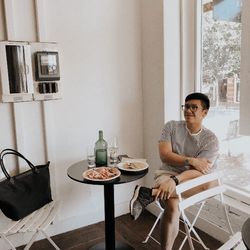
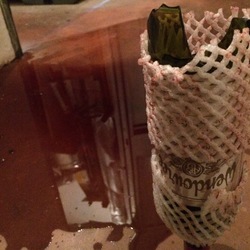
I 100% agree
I just wanted to mentioned too how important is the terroir
No producer can make an excellent wine out of a bad parcel in any vineyard
I recall Hubert De Montille saying in Mondovino how the terroir is 10 times more important than the vigneron/winemaker
And as an example you think of Rousseau Clos de la Roche where he doesn't really have a top parcel when Dujac or Ponsot do and make a better wine (IMO) than what I consider to be one of the best red wine producer of the Cote de Nuits(I know, the other two are not bad either). Anyway I just follow those lines too, producer, vineyard, parcel, vintage, but it is never easy.
I guess that's what makes it interesting. 👌🙏

Château Brane-Cantenac
Grand Cru Classé en 1855 Margaux Red Bordeaux Blend 2005
I have a six-pack of this 05. I thought after 10 years in bottle, it would be interesting to check in on its evolution. While tasty, I’ll wait another 8-10 to open another. Even after 2-3 hours in the decanter, it’s still a very young adolescent. On the nose, slightly sour blackberries & dark cherries, dark currants, baked black plum, haunting blue fruits, anise, whiff of spice, steeped tea, dry stones, dry crushed rocks with dry top soil, caramel, vanilla with fresh & dry red florals. The body is thick & full. Tannins are starting to round out. It’s velvety on the palate. The fruits are; bright, fresh & ripe and really show the greatness of the 05 vintage. Dark currants, blackberries, dark cherries, baked black plum, haunting blue fruits, baked strawberries, cherries, raspberries on the long set, dark spice, clay & loamy dry top soil with crushed rocks, dry stones, cigar with ash, graphite, dry stems, slight herbaceous character, mint, used leather, clove, caramel, vanilla, fresh & dry red florals with violets. The round acidity is about perfect. The structure and length are still strong. The balance is in harmony. As for the long finish, it’s lush, ruby, rich and well polished. Photos of; Chateau Brane Cantenac, large wood vats, Henri Lurton and Estate vines. Producer notes and history...Chateau Brane Cantenac began in the early 17th century. At the time, the estate was known as Domaine Guilhem Hosten. Even that far back, wine was produced from the property. In fact, the wine was so highly regarded it was one of the more expensive wines in Bordeaux. It sold for almost as much money as Brane Mouton. This is interesting because of who went on to buy the vineyard in the 1800’s. The Baron of Brane, also known as “Napoleon of the Vineyards”, purchased the Chateau in 1833. At the time of the sale, the estate was called Chateau Gorce-Guy. To get the funds needed to purchase the Margaux vineyard, the Baron sold what is now called Mouton Rothschild, which was at the time of the sale, known as Chateau Brane-Mouton. Not such a good move with hundreds of years in hindsight! In 1838, the Baron renamed property taking his name and the name of the sector where the vineyards were located and called it Chateau Brane Cantenac. The Chateau later passed to the Roy family, who were well-known in the Margaux appellation in those days, as they owned Chateau d’issan. Moving ahead to 1920, the Societe des Grands Crus de France, a group of merchants and growers that owned several chateaux located in the Medoc including; Chateau Margaux, Chateau Giscours, and Chateau Lagrange in St. Julien, purchased Chateau Brane Cantenac. Five years later, M. Recapet and his son-in-law, François Lurton, took over Brane Cantenac along with Chateau Margaux. Lucien Lurton (the son of François Lurton) inherited Brane Cantenac in 1956. Today, the estate is still in the hands of the Lurton family. Brane Cantenac is owned and run by Henri Lurton. After being given the responsibility of managing Brane Cantenac, it was under the direction of Henri Lurton that large portions of the vineyard were replanted. Vine densities were increased, the drainage systems were improved and the plantings were also, slowly changed. The vineyard of Brane Cantenac is planted to 55% Cabernet Sauvignon, 40% Merlot, 4.5% Cabernet Franc and .5% Carmenere. Carmenere was used for the first time in the 2011 vintage. The only other Chateau I know that still uses Carmenere is Clerc Milon. The 75 hectare Left Bank vineyard of Brane Cantenac is essentially unchanged since it earned Second Growth status in the 1855 Classification. At least that is the case with the 45 hectares used to produce the Grand Vin of Brane Cantenac. Those 45 hectares are planted surrounding the Chateau. Those vines are located just in front of the Cantenac plateau and are the best terroir that Brane Cantenac owns. They have other parcels, which are further inland and much of those grapes are placed into their second wine, Le Baron de Brane. Those additional hectares can be divided into 3 main sections. Behind the Chateau, they have 15 hectares of vines on gravel and sand, 10 hectares across the road with sand, gravel and iron and a 13 hectare parcel with gravel called Notton, which is used for their second wine. The vineyard is planted to a vine density that ranges from 6,666 vines per hectare on the plateau and up to 8,000 vines per hectare for the vines located behind chateau, in their sandier soils. The higher levels of vine density are always found in the newer plantings. The terroir of Brane Cantenac consists of deep gravel, sand and clay soil. Experiments in the vineyards are currently looking at becoming more organic in their vineyard management. Today, more than 25% of Brane Cantenac is farmed using organic farming techniques. It is expected that over time, the amount of hectares farmed with organic methods will be increased. Brane Cantenac has gone through 2 relatively recent modernization’s in 1999, when they added began adding the first of their smaller vats to allow for parcel by parcel vinification and then again in 2015 when they completed a much more complete renovation of their cellars and vat rooms. While Brane Cantenac is a traditional producer, they are no stranger to technology as they were one of the first estates to embrace optical grape sorting machines. In very wet vintages, they can also use reverse osmosis. To produce the wine of Chateau Brane Cantenac, the wine is vinified in a combination of temperature controlled, traditional, 22 oak vats, 18 concrete tanks and 20 stainless steel vats that vary in size from 40 hectoliters all the way up to 200 hectoliters, which allows for parcel by parcel vinification. 40% of the fermentation takes place in the oak vats. The oldest vines are vinified in vats that are selected to allow for separate parcel by parcel vinification. The younger vines are vinified more often together in the same vats. However, the Carmenere is entirely micro-vinified, meaning that those grapes were completely vinified in barrel, using micro-vinification techniques. This can also happen because the amount of grapes produced is so small. Some vats can be co-inoculated, meaning they go through alcoholic fermentation and malolactic fermentation simultaneously. At Chateau Brane Cantenac, malolactic fermentation takes place in a combination of French oak tanks and barrels. The wine of Brane Cantenac is aged in an average of 60% new, French oak barrels for 18 months before bottling. The initial 2 months of aging is done with the wine on its lees, which adds more depth to the wine. There second wine is Le Baron de Brane. Le Baron de Brane is not new. In fact, previously, the second wine went under the name of Chateau Notton, which took its name from one of the main parcels where the grapes were planted. During the late 1950’s and into the 1960’s, having a second wine was important as the estate declassified 3 vintages, due to extremely poor, weather conditions in 1956, 1960 and 1963. Production of Chateau Brane Cantenac is about 11,000 cases per year. — 8 years ago
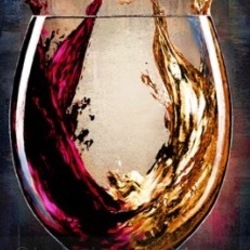
Domaine Leflaive
Chevalier-Montrachet Grand Cru Chardonnay 1996
From a perfect looking bottle bought 10 years ago in Paris at Caves de Taillevant where it was stored since release. Yellow gold color. Lemon, citrus, allspice, petrol, wet stone notes in the mouth. Huge acidity and structure in the mouth with great fruit. Overwhelming impact makes your face flush with the first big sip. Very long finish. My epiphany white burg wine many years ago delivers once again. Will certainly improve with another decade of age. — 9 years ago
Weingut Dreissigacker
Bechtheimer Dry Riesling
Another one of the Grand Crus- this wine is insane- limestone imparts a bracing minerality, laser focus. — 10 years ago


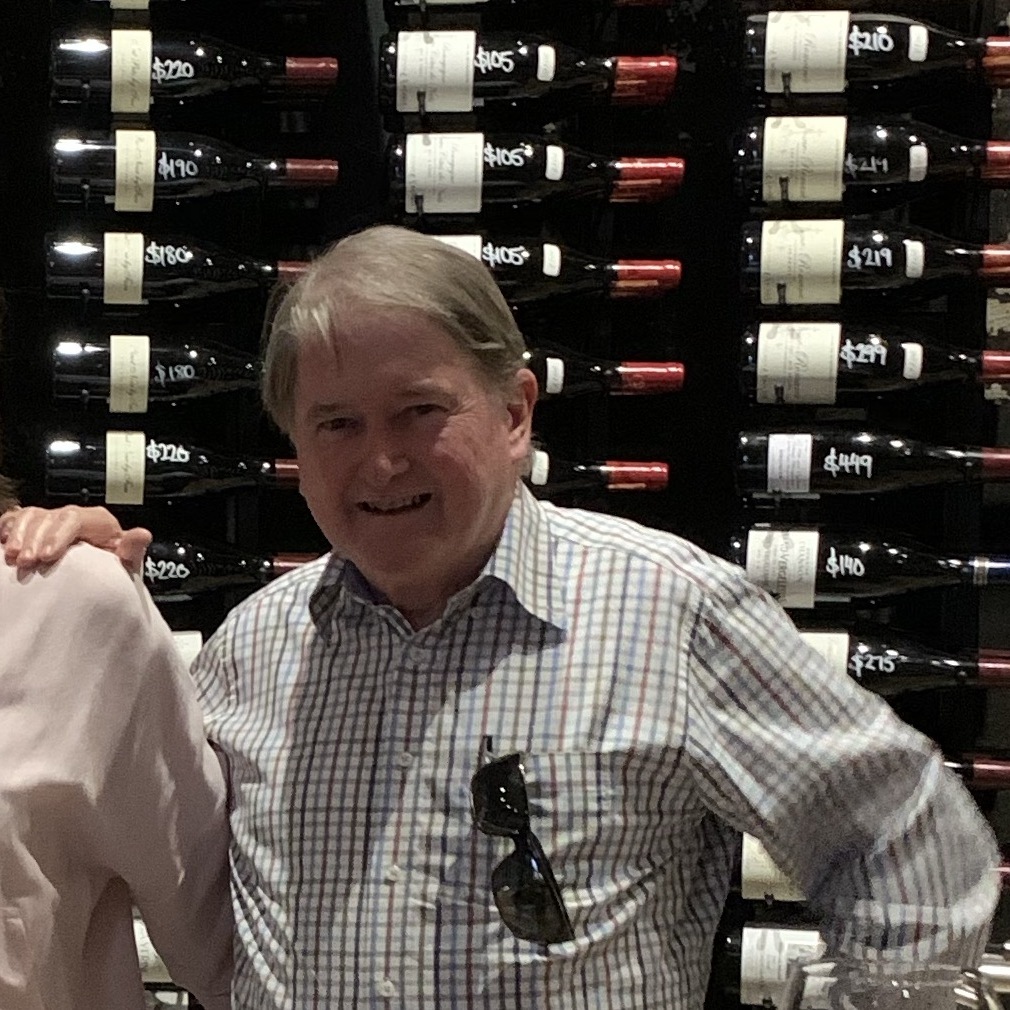



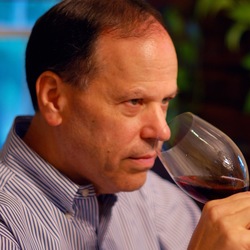







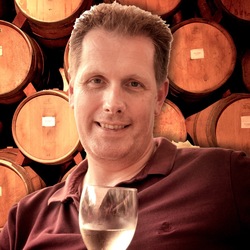


Somm David T
Independent Sommelier/Wine Educator
Four day weekend. Gotta get it off to a good start. Been awhile since we had our 375ml of Ruinart.
The nose shows, ripe, slightly candied; black cherries, strawberries, kirsch cherries, rich, summertime watermelon, touch of orange citrus family blend, pomegranate juice, hints of fruit roll up & haunting apricots. Sea fossils & spray, a little bread dough, grey volcanics, chalky powder, orange, spring flowers with fresh & withering, red & pink rose pedals.
The palate is full & touch gummy/candied. Fruits are well extracted, deep, ruby; black cherries, blackberries, strawberries, kirsch cherries, rich, summertime watermelon, touch of orange citrus family blend, pomegranate juice, hints of fruit roll up & haunting apricots. Ghostly, not quite fruit brandy or fruit liqueur character, sea fossils & spray, a little bread dough, not quite medium, white spice with hints of palate heat, grainy, grey volcanics, chalky powder, orange, spring flowers with fresh & withering, red & pink rose pedals. The acidity lively and crisp. The round, well balanced & polish finish is always consistently satisfying and lingers for minutes.
Photos of; the House of Ruinart, Dom Thierry Ruinart, nicely light caves and rolling, hillside, Grand Cru Vineyard.
Not quite sure where “D” gets $83 when you can buy this all day at just under $65. — 6 years ago